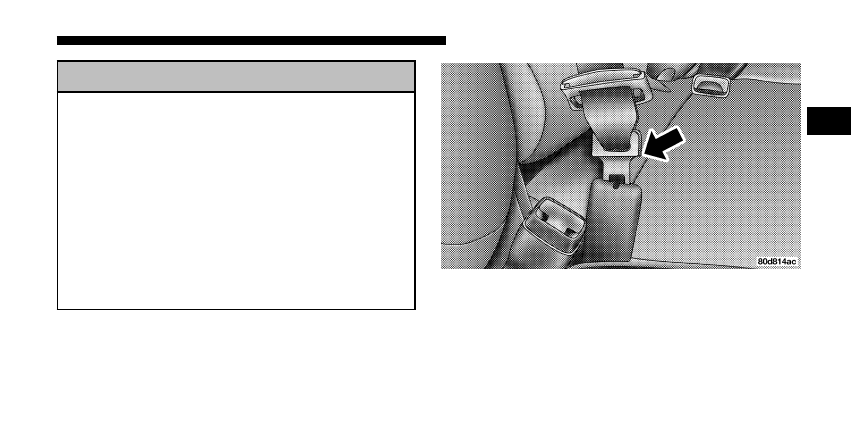Dodge 1500 (Gas) (2006 year). Manual - part 3

WARNING!
• If the black latch and black buckle are not prop-
erly connected when the seat belt is used by an
occupant, the seat belt will not be able to provide
proper restraint and will increase the risk of
injury in a collision.
• When reattaching the black latch and black
buckle, ensure the seat belt webbing is not
twisted. If the webbing is twisted, follow the
preceding procedure to detach the black latch and
black buckle, untwist the webbing, and reattach
the black latch and black buckle.
Inserting Latch Plate
THINGS TO KNOW BEFORE STARTING YOUR VEHICLE
37
2